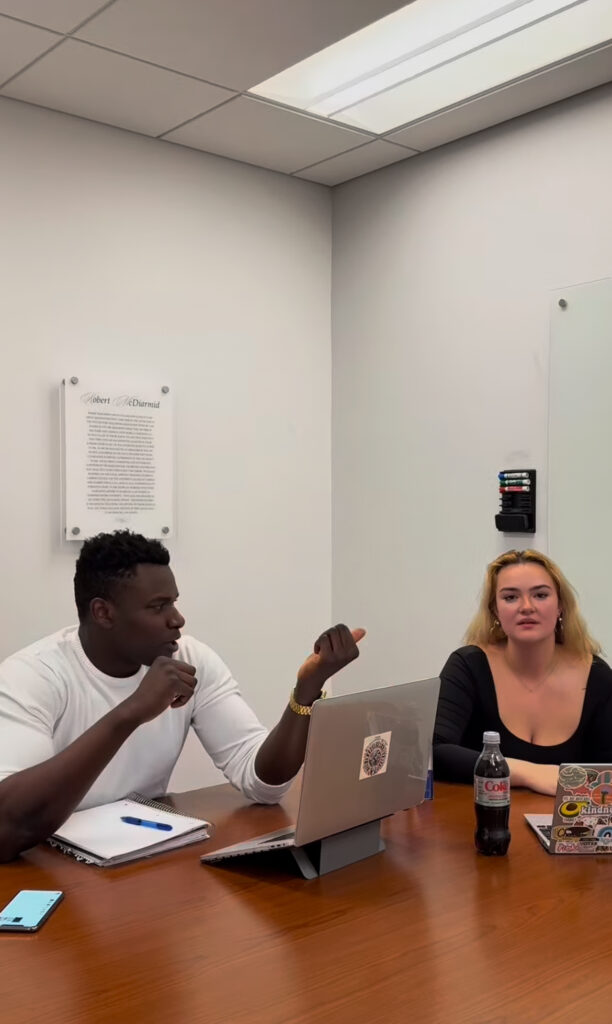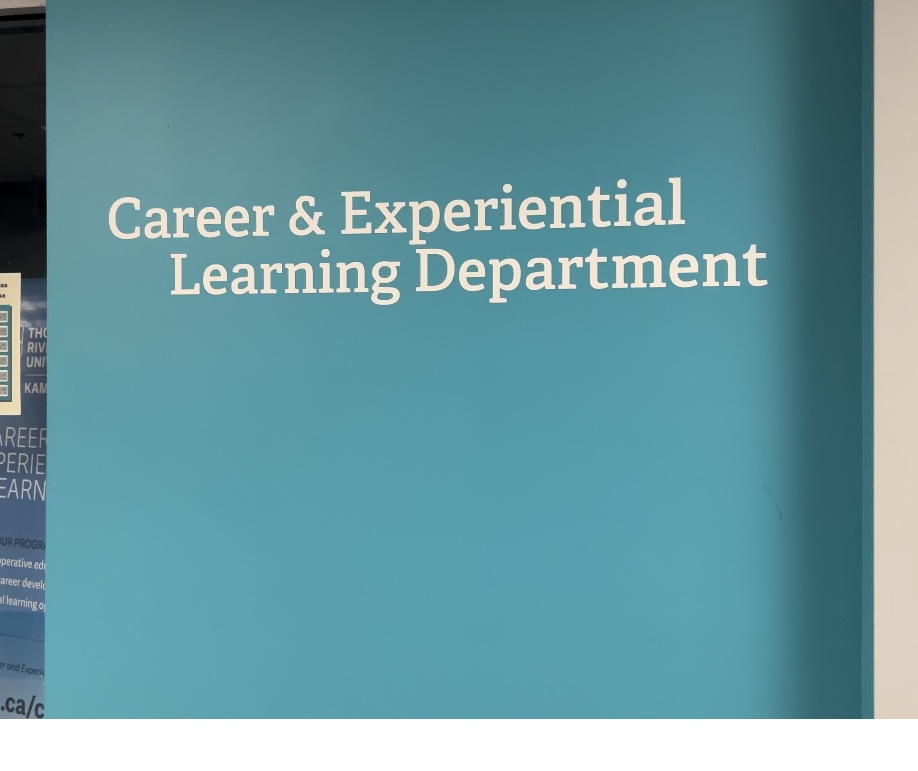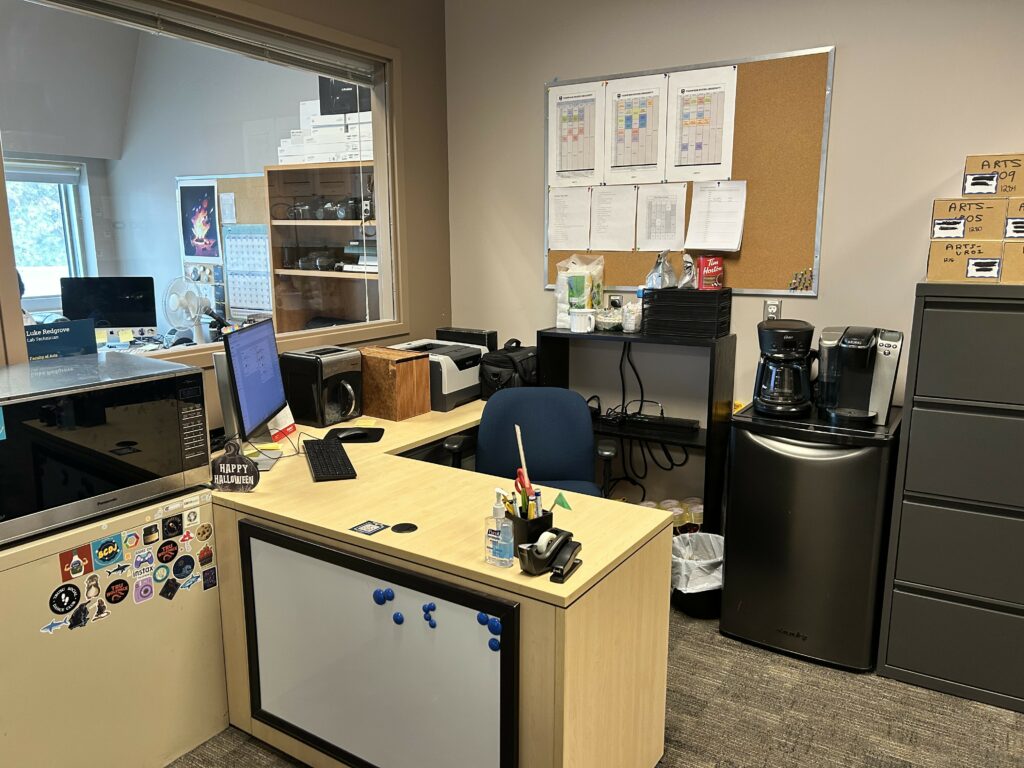TRU Launches Insightful Law Podcast with Legal Perspectives from Practicing Lawyers in Kamloops
Thompson Rivers University (TRU) is broadening its commitment to academic innovation and community engagement with the launch of an exciting new podcast focused on law and legal practice. Officially titled The TRU Law Podcast, this podcast is a result of students with an interest in law who want to provide those interested in law a way of consuming content that sparks curiosity. The first episode of this podcast will be released on the 30th of November.

Image taken from The TRU podcast Instagram
When asked what inspired this passion project, the president of the TRU Law podcast, Ayomide Maxwell, said he was inspired by major law firms like McCarthy Tétrault, Norton Rose Fulbright, and Bennett Jones. Maxwell also shared that the initial goal of the podcast is to focus on recent cases and provide analysis from professors and local lawyers to make legal insight more accessible. With a good balance of perspectives from practiced lawyers in Kamloops as well as law students, the podcast will offer professional insight that is well balanced with academic curiosity.
The podcast serves to bridge the gap between the sometimes intimidating legal world and the world of everyday listening. As Vice President of the podcast, Millie Del Villano highlights, “There is a distinct lack of Law-related podcasts of this type.” Unlike other law podcasts, the TRU Law Podcast will be designed to make law more relatable and comprehensible for a broader audience. Filling a unique niche by presenting legal concepts in a way that is easy to digest for listeners who may not have any prior legal background.
A podcast offers students a unique and engaging way to digest what might be complex legal information, providing a fresh alternative to the formal law lectures students might otherwise have access to in order to learn about these legal concepts. The use of the podcast medium allows for more flexibility, allowing students to listen at their own pace, revisit key points as needed, or multitask while they are commuting, exercising, or relaxing.
Podcasts being s much more customizable experience, allows students to more seamlessly integrate learning into their daily routines. Which can allow podcasts foster a sense of intimacy and engagement that traditional lecture or lecture-like forms of information delivery may lack. Through informal discussions, humour, and reliable personal experiences that the podcast hosts add in the way they deliver their information, this can make the information more memorable and also create a sense of connection between the host and the listeners. This tone can help when presenting challenging legal principles, making them feel more approachable and relevant to students’ lives.
The podcast format also allows TRU Law Podcast to incorporate more recent real-world examples, which can be more impactful than older ideas and legal cases presented in lectures. Interactive elements like guest speakers or listener-submitted questions contribute to a more dynamic and participatory learning experience. Podcasts offer an innovative way to make learning both engaging and efficient. As Maxwell puts it, “Podcasts appeal to a tech-savvy generation that prefers audio content over traditional formats like books and lectures. They make legal knowledge more accessible and engaging.”

Image taken from The TRU podcast Instagram
When asked how the TRU Law podcast would stay up-to-date with recent legal developments to keep the content relevant, Del Villano said, “We are very lucky to have two amazing research VPs who are skilled at keeping up to date.” Maxwell also added that he is subscribed to newsletters that provide weekly updates on recent cases that he engages in conversation with lawyers across various practice areas, and is an avid listener of many well-renowned law podcasts.
The topics that will be covered on the podcast will be selected by an “executive team” that is composed of people with a passion for law who will pick content and topics that will reflect the interests of the student body. However, a core focus that will remain is that the podcast will be to summarize impactful recent cases. By summarizing recent cases, the podcast will keep students informed about developments that complement what has previously been covered in order to build upon what they have learned. By keeping students informed about the latest developments in law cases, the podcast can help students see how the theoretical learning they have been doing can be applied to real-world legal practices. Beyond law cases, the podcast will cover broader legal topics that resonate with the lived experiences of students.
Tenancy law, for instance, will provide insights into the rights and obligations of a landlord-tenant relationship, addressing common issues students may find themselves facing in their housing arrangements if they choose to live outside of the available dorms on campus. Similarly, immigration law discussions will cater to the diverse student body at TRU, offering practical advice on navigating visa processes, understanding residency requirements, and knowing the legal protections available to international students.
The TRU Law Podcast aims to empower students with the knowledge they can use in their personal lives, which would allow students to have a sense of preparedness in legal matters that concern them, whether they are aspiring legal professionals or those with a general interest in law. It will not only help to enrich the academic journey while attending TRU. The hope is that the podcast will improve the listener’s understanding of the legal framework in Canada.
References:
TRU Law podcast President, Ayomide Maxwell
TRU Law Podcast Vice President, Millie Del Villano
The TRU Law Podcast Instargam









